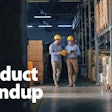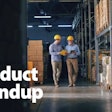Bendix has jumped on the green wave.
Earlier this year the company invested more than $3.2 million into its remanufacturing operations in Huntington, Ind., and as the calendar year comes to a close, the investment is already paying off.
Bendix says it is well on its way to setting corporate remanufacturing records for production volume, performance and total sales in 2014.
During an open house Thursday in Huntington, the company showcased how this summer’s investments have positioned Bendix to be a heavy-duty remanufacturing leader for years to come.
“We’ve seen double-digit growth for remanufacturing for the last few years,” says Henry Foxx, Bendix director of remanufacturing. “It’s that success that led to this investment in our facilities.”
Bendix’s Huntington, Ind. facilities allow the company to remanufacturer a wide selection of its OE product lines. Compressors and brake shoes are the highest-volume items, with the company’s remodeled brake shoe remanufacturing center standing as the crown jewel of its enhanced operation.
Designed using KPS world-class manufacturing strategies brought by its parent company Knorr-Bremse, Chris Camp, operations manager, remanufacturing, says the company’s new brake shoe facility produces more than 5,000 remanufactured brake shoes per day.
The production line starts with core collection and salvage.
Camp says all cores returned to Bendix are immediately sorted based on type and quality. Useable cores are boxed and moved into a queue where they can easily be accessed by the production line when ready.
The production line is a sight to behold. Cores are constantly in motion from the moment they enter the line at a washing station at a rate of one shoe every 6 to 8 seconds.
Testing stations can be found throughout the line to check for imperfections and remove damaged cores, while employees use state-of-the-art machines to remove excess kit pieces (springs, etc.).
Old friction material is removed by a de-riveting machine built to precisely and perfectly pop every rivet. Camp says this eliminates any damage to a rivet hole that could potentially impact the future performance of the shoe.
After a baking and blasting process cleans the shoes, they are sent to coining press that ensures their shape still meets original equipment specifications.
This is an important step, adds Frank Gilboy, product line manager, remanufacturing, because it only takes a slightly distorted shoe to create major on-road performance issues.
From there, the shoes are cleaned and painted, then transferred to a packaging operation. Friction material is added at this station, and then the newly formed shoe is packed into a box with an installation kit and sent on its way.
With sights set on producing more than 2 million shoes produced this year; the facility is wildly efficient.
The same can be said of its other remanufacturing facility at Plant 1 of the company’s four Huntington locations.
There, Camp says the company has created dedicated production corridors called value streams for each remanufactured product, which allow simple and direct production routes through the facility.
These value streams also allow the company to produce a remanufactured product that meets all OE specifications, an advantage Foxx and Gilroy says most competitors simply can’t match.
Bendix remanufactured more than 112,000 compressors in Huntington in 2013. Foxx and Camp expect this year’s number to be much higher. And with their new operation, Camp says they have the ability to add even more capacity.
Foxx adds that that’s a good thing, because the numbers are pointing up.
The company nearly hit $100 million in sales from remanufacturing sales last year.
Distribution/OE manufacturing
The company’s Huntington investment also has improved the performance of its on-site OE manufacturing and distribution operations.
Bendix produces legacy products and electronic modules in its Plant 1 facility, and Randy Seaman, operations manager, distribution and OE, says the latter provide the company a significant growth opportunity in the coming years.
Combined with its new streamlined operation, Seaman says his facility will soon be able to greatly increase capacity without expanding floor space.
“We had record-level sales the last few months, and were able to do that with record low levels of backlog and record high delivery performance,” he says.
That’s something the company hopes its more than 3,500 ship-to aftermarket locations appreciate.
“A big part of our work going forward is proving our case,” says Foxx. “Continuing with this [highest level of performance].”











